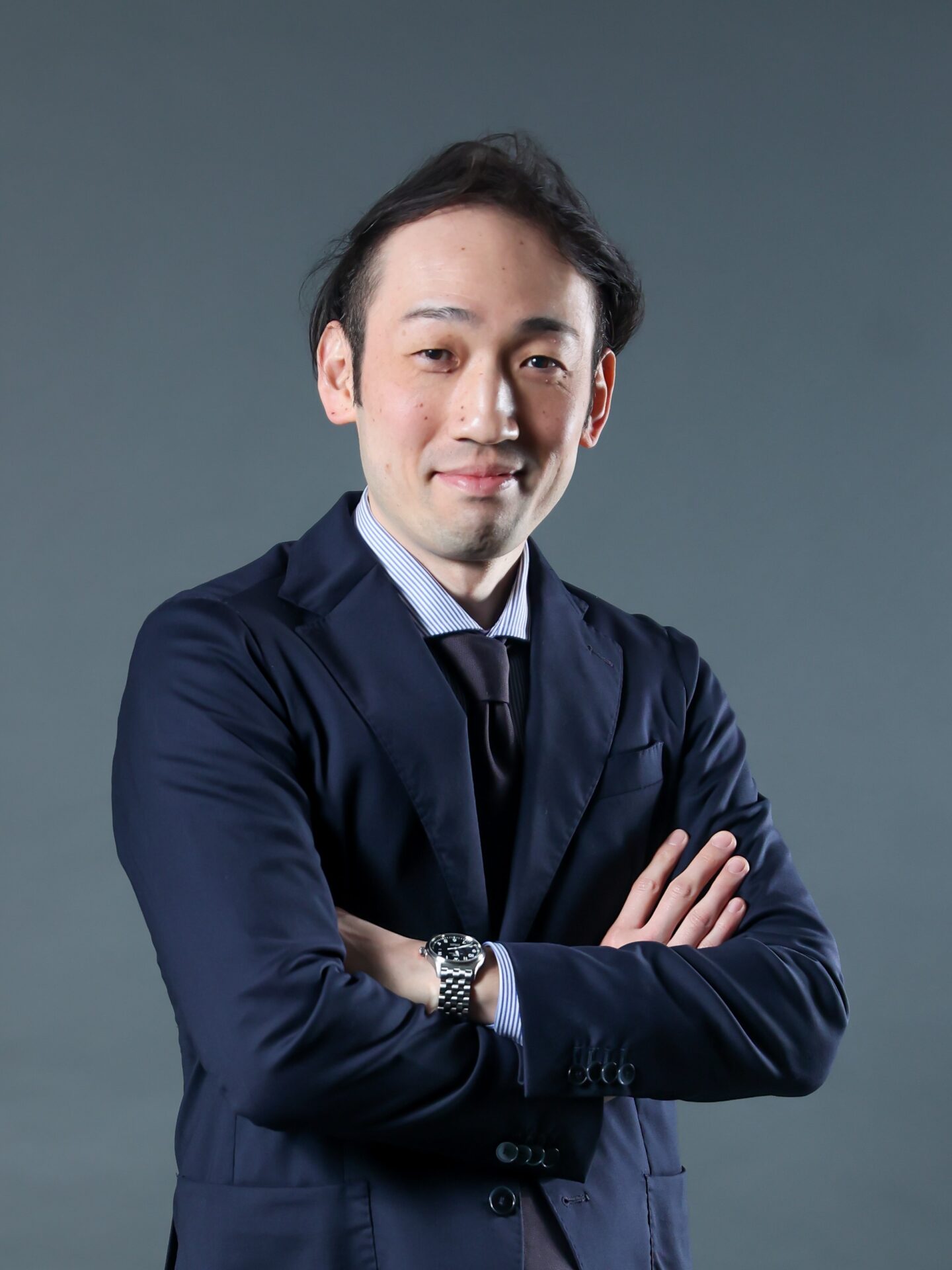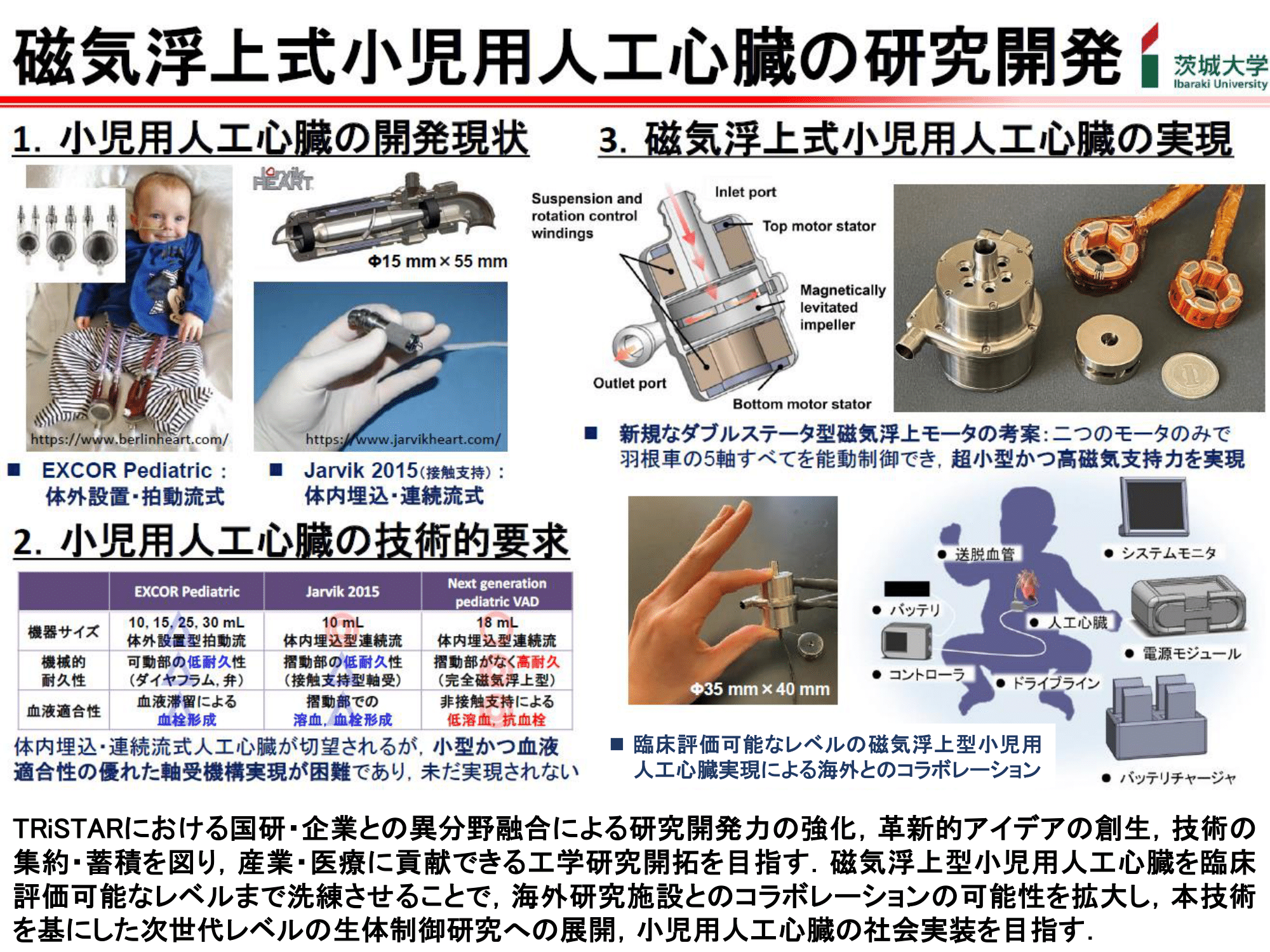第2期フェロー

長 真啓
OSA, Masahiro
茨城大学大学院
理工学研究科
講師
Lecturer
Graduate School of Science and Engineering
Ibaraki University
- 専門分野
Research fields - 機械力学・制御,医用メカトロニクス,生体医工学
Mechanical dynamics, Control engineering, Mechatronics, Biomedical engineering
- 研究テーマ
Research project - 磁気浮上アクチュエータの設計と制御,人工心臓への応用
Design and control of magnetically levitated actuators, Magnetically levitated ventricular assist device
- キーワード
Keywords - 磁気浮上モータ・磁気軸受,人工心臓
Maglev motor, Magnetic bearing, Mechanical circulatory support
- 研究者総覧
Researchers Information - https://info.ibaraki.ac.jp/Profiles/27/0002643/profile.html
- researchmap
- https://researchmap.jp/7000007335
経歴
Biography
茨城大学工学部機械工学科卒業。茨城大学大学院理工学研究科博士前期課程機械工学専攻修了。茨城大学大学院理工学研究科博士後期課程生産科学専攻修了。2014年より茨城大学に赴任し,世界最小の磁気浮上型小児用人工心臓を目指した5軸制御磁気浮上モータの小型化、高性能化に関する研究に従事している。2018年度より日本医療研究開発機構の事業を通して、機器の改良,動物試験における医学的評価を実施しながら、大学発コア技術を応用した小児用人工心臓の社会実装を目指している。
Masahiro Osa is a Mechanical Engineer and is a lecturer of the Major in Mechanical Systems Engineering, Graduate School of Science and Engineering, Ibaraki University, Japan. He is a graduate of Graduate School of Science and Engineering, Ibaraki University, Japan, and received his Ph.D. degree in Engineering in 2014. He was working as a Research Fellowship for Young Scientists from 2012 to 2014. He has more than 10 years of experience in design, control and development of magnetically levitated actuators for use in mechanical circulatory support devices. Since 2014, he has studied miniaturization and performance enhancement of the proposed magnetically levitated motor with 5 degrees of freedom active control to develop the implantable pediatric VAD. Since 2018, through the project of the Japan Agency for Medical Research and Development, he has performed animal experiments to evaluate the prototype pediatric VAD for socially implement a pediatric circulatory support device.
研究概要
Research Outline

機械的循環補助装置は重篤な心不全患者に対する心臓移植までの橋渡しまたは半永久的な循環補助を目的として使用されている.連続流式ポンプ技術の発展に伴い,成人の心不全患者には体内植込み型の補助人工心臓が臨床応用され,人工心臓適用による救命率の増加,QOLの向上が認められている.近年では,小児心不全患者への補助人工心臓適用の機運が高まっている.しかし,体格の小さな小児の心不全患者に供せる体内植込み型補助人工心臓の研究開発は未だ発展途上であり,小児用補助人工心臓は世界でも体外設置型拍動流式補助人工心臓EXCOR Pediatricに限られている.このため、体内植込みでの年オーダーの長期的な使用,退院・在宅医療を実現できる連続流式の小児用補助人工心臓の研究開発が急務である.植込み型小児用人工心臓開発のキーテクノロジーは,血液適合性の良い(血液を壊さない,血液が固まらない)軸受機構の小型化である.本研究では,同一形状の二つのアキシャルギャップ型モータで浮上ロータを上下から挟み込み,ロータ姿勢の5自由度すべてを能動制御可能な磁気浮上モータを開発している.現在,直径22 mm,全高33 mmまでモータの小型化に成功している.本磁気浮上モータを小児用人工心臓へ適用するため,更なる小型化,高性能化に取り組んでいる.本研究では,血液適合性を格段に向上できる磁気浮上技術を人工心臓用血液ポンプに応用し,世界に先駆けて小児用人工心臓実現を目指す.
Mechanical circulatory support (MCS) devices such as ventricular assist devices (VADs) are used as a bridge to heart transplantation or destination therapy for severe heart failure patients. Implantable VADs have been clinically available for adult patients according to advance of compact continuous flow VAD technologies, increasing the survival rate and improving quality of life. In recent years, there has been growing interest in MCS used in pediatric patients. However, pediatric VADs are limited to the EXCOR Pediatric, which is extracorporeal pulsatile flow VAD, due to difficulty of of continuous flow pediatric VADs development caused by technical issues such as device miniaturization and blood compatibility (no hemolysis and no thrombosis). In this research, an ultra-compact axial flux permanent magnet synchronous maglev motor which has been developed for a next generation continuous flow implantable pediatric VAD. The motor has two identical motor stators, and a levitated impeller is sandwiched between the stators. Originality of the maglev motor undergoing development is five degrees of freedom active control of impeller postures with only two motor stators enhancing suspension stability in small device size. The motor has been successfully miniaturized to 22 mm in diameter and 33 mm in height. A maglev pediatric VAD prototype has been developed combining the compact maglev motor and a centrifugal blood pump. The developed prototype has sufficient hydraulic characteristics for pediatric circulatory support and non-contact impeller suspension performance. Currently, chronic animal trial has been started in extracorporeal circulation, and the prototype VAD demonstrates sufficient magnetic suspension stability and better blood compatibility, indicating a significant potential for achieving the practical use of a next generation pediatric VAD. As a next step, long term animal experiment with device implantation as well as development of a total system of the pediatric VAD will be conducted.
私が目指すトランスボーダー研究者とは
What is my goal as a transborder researcher?
次世代人工心臓研究において企業・医療機関と協同した実用化研究を通して蓄積されたモノづくり技術,研究成果・獲得知見は,異分野共存による新たな研究創生や専門深化への相乗効果を得る大きなチャンスを生み出すものである.TRiSTARへの参画により,専門分野を活かした産学・医工連携研究を積極的に活性化することで,更なる研究実践力の強化と合わせて,研究組織体制構築やモノづくりのスピード感を新たに吸収し,産業・医療に貢献できる工学研究開拓と確実な社会実装を目指したい.
The manufacturing technologies, research procedures, and knowledge obtained through research and development of the next generation pediatric VAD in collaboration with companies and medical institutions offer great opportunities for synergistic effects in the creation of new research and the deepening of expertise through the coexistence of different fields. I hope to actively activate industry-academia/medical-industry collaboration research that makes the most of our fields of expertise by participating in TRiSTAR project. As well as, I would like to build a new research organization and absorb a new sense of speed in manufacturing, aiming to establish engineering research implemented in society that can contribute to industry and medical fields.
ピックアップムービー
-
TRiSTARフェロー紹介 第2期フェロー 長 真啓 OSA, Masahiro
